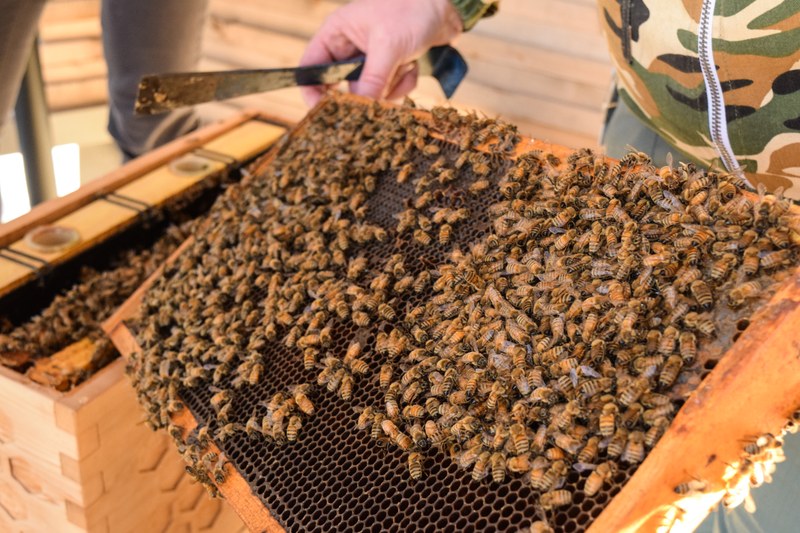Posted: November 11, 2021
IBC Education Specialist Heather Desorcie reports on preparing bee hives for their first winter at the Pollinator and Bird Garden

Dr. Natalie Boyle (L) and Kate Anton (R) feed the observation hive at the Arboretum one last time in preparation for winter weather
Last week, to prepare for cold winter temperatures, Grozinger lab and apiary manager Kate Anton and Assistant Research Professor Natalie Boyle checked on the bees one last time to make sure they had the resources they need to survive through the season. Honey bee colonies overwinter as adults in a cluster, which includes several thousand female winter bees and the queen. They eat from the honey stores they produce through the summer and fall months, and vibrate their flight muscles to maintain the temperature of their colony above 85°F, even when winter temperatures are below freezing outside.


Left: Brood production slows in preparation for winter, but adult bees remain in the hive. Right: An oxalic acid dribble is applied to the colony using a plastic syringe
Anton and Boyle prepared the bees by replacing the glass observation hive bodies with solid wood hive bodies, so the colony would be better-insulated against the elements. They also fed the bees sugar syrup, which the bees will eat and use to top off their honey reserves going into the winter. Finally, the bees were treated with an oxalic acid dribble using a syringe. Oxalic acid is an organic Varroa mite treatment - it is effective at killing mites on adult bees, and is best applied late in the fall after the bees have stopped rearing brood. Treatments this time of year help mite levels to remain low in the spring. Beekeepers use several techniques to prevent and treat Varroa mites year-round. You can read more about challenges and tools for effective Varroa mite control, and about their biology, in this PSU Extension note.

